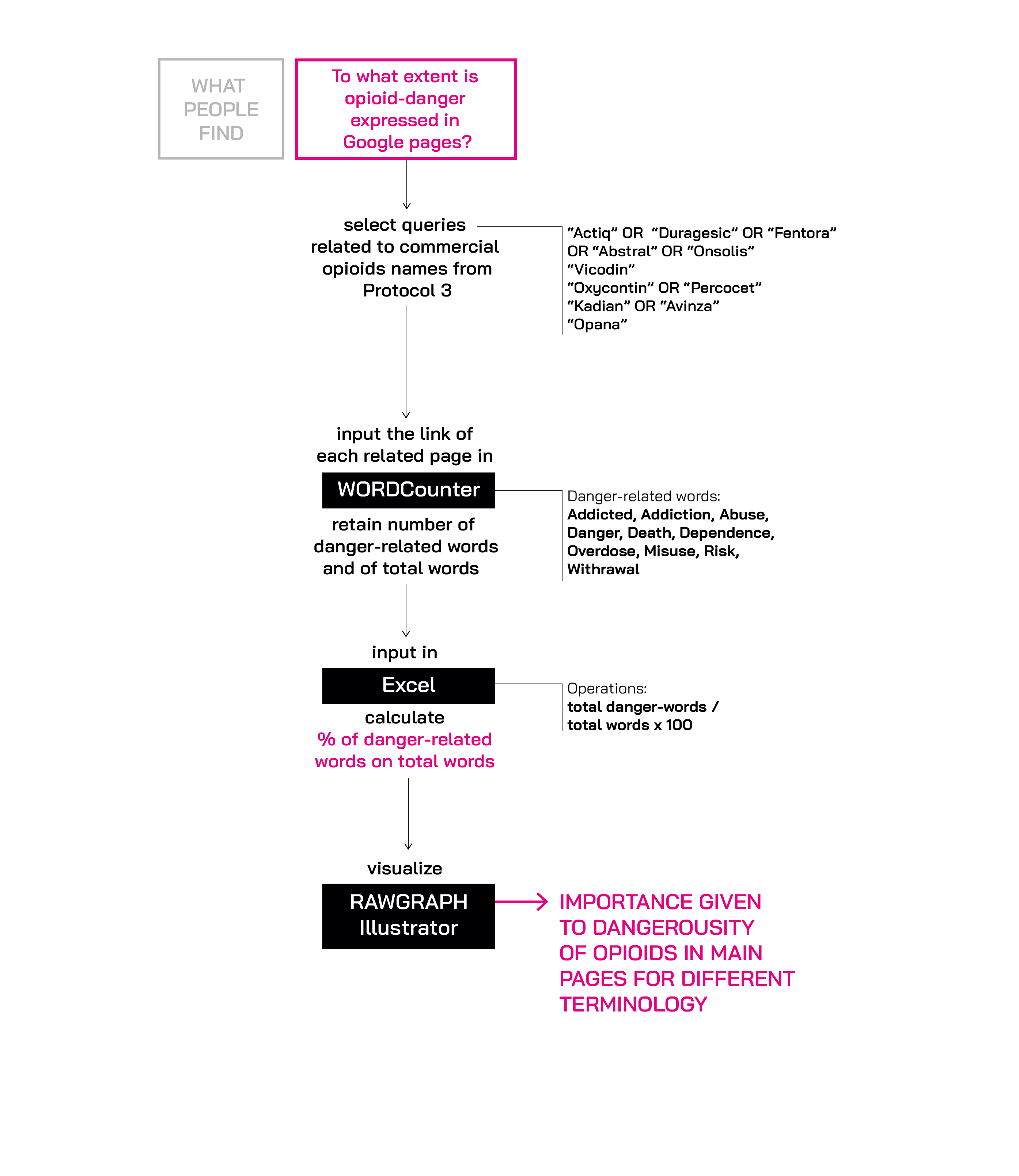Description
In the visualization it is possible to observe how much the pages found on Google querying the commercial names of most popular opioids (Protocol 3) focus their attention on the danger related to their assumption. It is noticeable that also pages made for experts are unexpectedly expressing the danger of opioids as much as educational pages for non-experts. Opana seems to be the medicine most connected to a high level of danger, followed by Vicodin. Anyway, the pages to be more focused on the danger level of opioids never appear on the first page of Google but always in the following.
Through this protocol we wanted to measure the actual level of awareness about opioids that is given through Google to people and, to be more specific, if and how is the level of danger of opioid painkillers expressed in the pages collected. In particular we wanted to analyse how each page for a specific medicine gives relevance to what we usually call side effects (serious ones), in what way pages for experts and non-experts focus on this awareness and how the pages that strongly highlight the danger level are located on Google in term of index (if they appear in the first page or not).
First, we had to decide how to measure the level of danger expressed by each page and, after a first manual attempt, we decide to consider the amount of words related to serious side effects in proportion to the total words of the page. The selected danger-related words are: addicted, addiction, abuse, danger, death, dependence, overdose, misuse, risk, withdrawal. Taking the groups of queries from Protocol 3 we input the link of each related page on WORDCounter retaining the number of each danger-related words and the number of total words. After saving the results on Excel, we calculated the percentage of all danger-related words on the total. Finally, we visualized the data representing on one hand the obtained percentage with size of elements and on the other hand the public that each page address by using colours – according to data of Protocol 3-.
Protocol

Data
Data Source: DensityDesign
Timestamp: November 2018
View Data (500Kb)
The document contains all the queries about prescription opioid in general and drug brand name: percentage of danger, provider of the website and type of public addressed are the information that can be found for each page result.